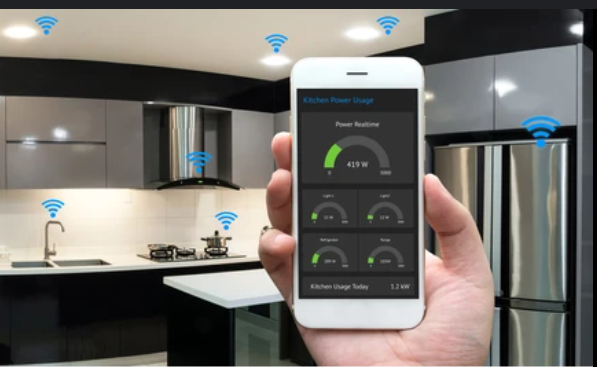How to Install a Smart Dishwasher (In- Depth)
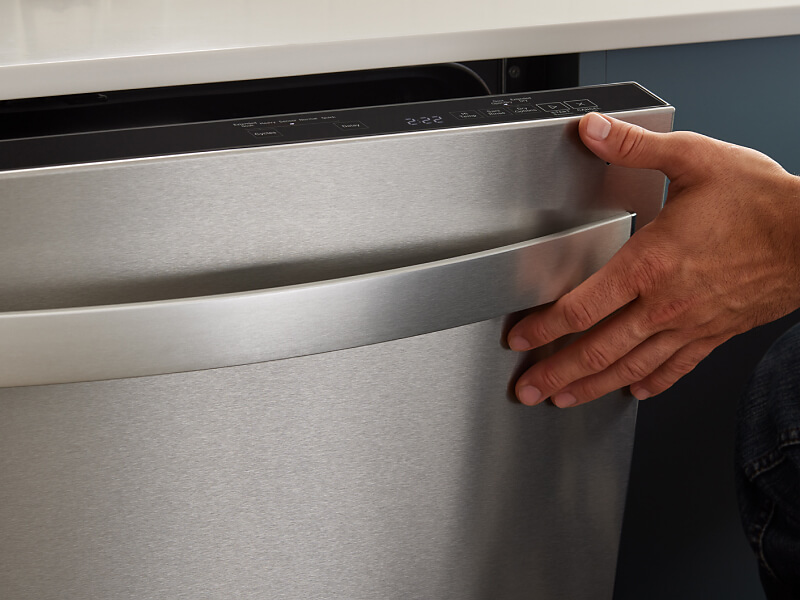
In today’s tech-savvy world, smart appliances are revolutionizing home life, making daily tasks more convenient and efficient. Among these, smart dishwashers stand out for their ability to offer enhanced cleaning power, energy efficiency, and connectivity features that allow for remote monitoring and control.
Installing a smart dishwasher can seem daunting, but with the right guidance, it can be a straightforward task that greatly enhances your kitchen’s functionality.
Here is a Quick Overview of How to Install a Smart Dishwasher:
To install a smart dishwasher, disconnect the water and power supplies from the old unit. Prepare the installation site by measuring space, adjusting connections, and installing necessary lines.
Position the new dishwasher, connect water, drainage, and electrical wires, and secure it. Finally, test functionality, configure smart features like Wi-Fi, and address any issues with routine maintenance.
How to Install a Smart Dishwasher – Comprehensive Guide
This comprehensive guide will walk you through the entire process of installing a smart dishwasher, ensuring you can enjoy its benefits with minimal hassle.
1. Preparing for Installation
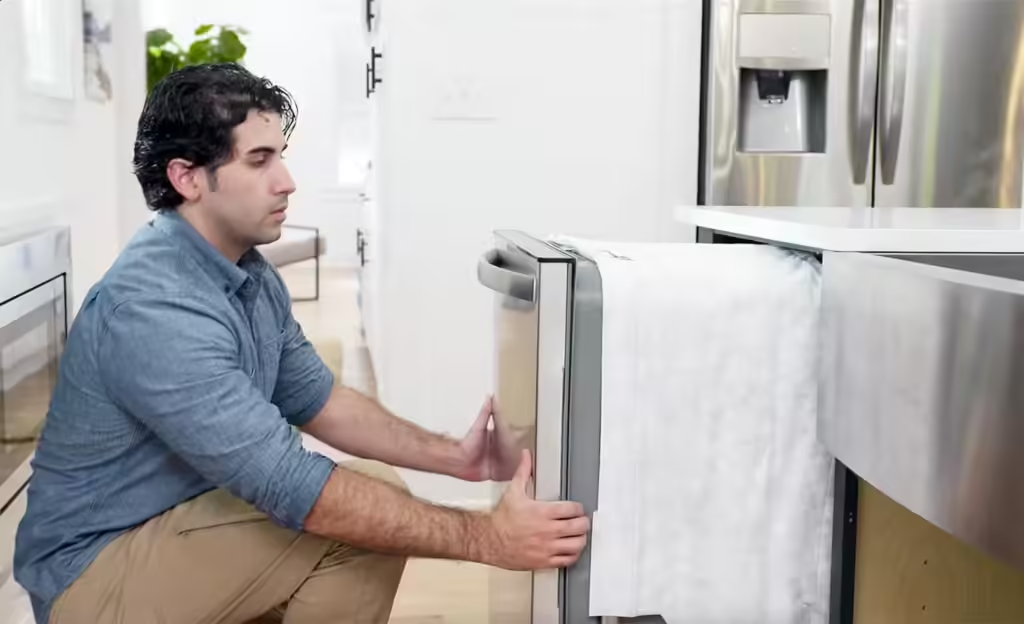
Understanding Your Smart Dishwasher
Before you dive into the installation process, it’s crucial to familiarize yourself with your new smart dishwasher. Smart dishwashers come with advanced features such as Wi-Fi connectivity, app control, and even voice command capabilities.
Understanding these features will help you make the most of your appliance and ensure that the installation process aligns with its specifications.
- Features and Capabilities:
- Wi-Fi Connectivity: Allows remote control and monitoring.
- Smart Sensors: Automatically adjust cycles based on load and soil levels.
- Integration with Smart Home Systems: Compatible with voice assistants and home automation systems.
- Specifications and Compatibility Checks:
- Size and Dimensions: Ensure the dishwasher fits the designated space.
- Electrical and Water Requirements: Check voltage, amperage, and plumbing compatibility.
Gathering Necessary Tools and Materials
Proper preparation is key to a successful installation. Gather the following tools and materials to streamline the process:
- Tools:
- Screwdriver (flathead and Phillips)
- Pliers
- Level
- Wrench
- Tape measure
- Bucket or towel (for potential water spillage)
- Materials:
- New water supply line (if required)
- Electrical outlet adapter (if needed)
- Hose clamps and connectors
Safety Precautions
Safety is paramount when installing appliances. Follow these precautions to prevent accidents and ensure a smooth installation:
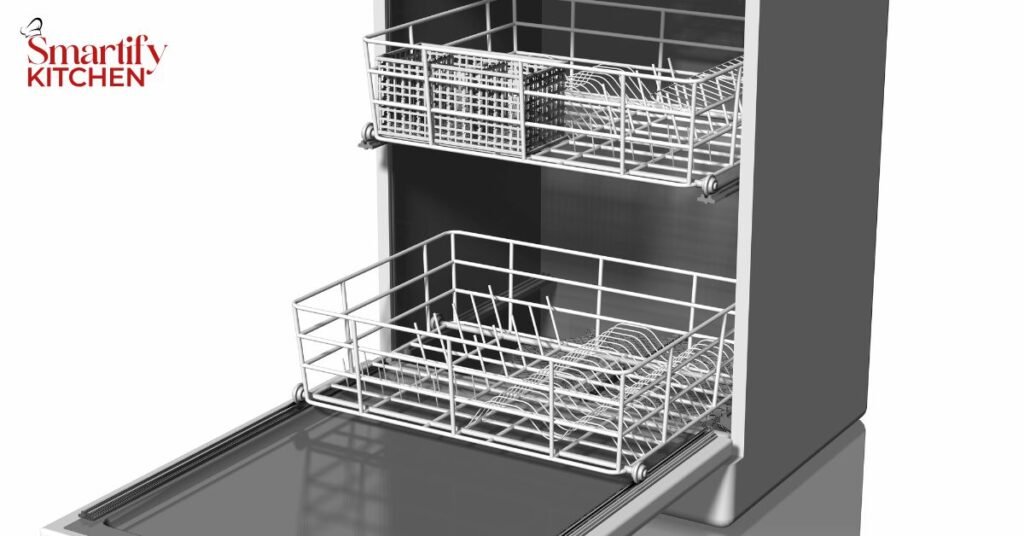
- Turn Off Water and Electrical Supply:
- Locate the water shut-off valve under the sink or near the dishwasher and turn it off.
- Turn off the electrical supply by switching off the circuit breaker or removing the fuse.
- Ensure Proper Ventilation:
- Make sure the installation area is well-ventilated to avoid exposure to fumes or potential accidents.
2. Removing the Old Dishwasher
Let’s Explore some tips about Removing the Old Dishwasher.
Disconnecting Water and Power Supply
To remove the old dishwasher, you first need to disconnect its water and power sources:
- Turn Off the Water Supply:
- Locate the water supply line connected to the old dishwasher and turn off the valve.
- Disconnect the water supply hose from the dishwasher using pliers.
- Turn Off Power:
- If the dishwasher is hardwired, disconnect the electrical wires. If it’s plugged into an outlet, simply unplug it.
Removing the Existing Dishwasher
With the water and power disconnected, you can now remove the old dishwasher:
- Detach from Countertop or Cabinetry:
- Use a screwdriver to remove any screws or brackets securing the dishwasher to the countertop or surrounding cabinetry.
- Slide Out the Old Dishwasher:
- Carefully slide the old dishwasher out of its space. Be cautious of any water remaining in the machine.
- Clear the Area:
- Remove any debris or leftover connections from the installation area to prepare for the new dishwasher.
3. Preparing the Installation Site
Let’s Explore some tips about Preparing the Installation Site.

Measuring and Adjusting Space
Before installing the new smart dishwasher, ensure that the installation space is properly prepared:
- Measure Dimensions:
- Measure the height, width, and depth of the new dishwasher. Compare these measurements with the installation space to ensure a proper fit.
- Adjust Space if Necessary:
- If the new dishwasher is slightly larger or smaller, adjust the surrounding cabinetry or flooring as needed to accommodate it.
Installing a New Water Supply Line
If your new dishwasher requires a new water supply line, follow these steps:
- Connect New Supply Line:
- Attach the new water supply line to the water inlet valve on the dishwasher. Ensure the connection is tight to prevent leaks.
- Check for Leaks:
- After connecting the supply line, turn on the water supply briefly to check for any leaks. Tighten connections if needed.
Preparing Electrical Connections
Ensure that the electrical setup is compatible with your new dishwasher:
- Verify Electrical Requirements:
- Check the dishwasher’s voltage and amperage requirements. Ensure that the electrical outlet or wiring matches these specifications.
- Install New Outlet or Adapter:
- If the outlet is not compatible, install a new outlet or adapter according to local electrical codes. Ensure all connections are secure.
4. Installing the Smart Dishwasher
Lets Explore some tips on Installing the Smart Dishwasher.
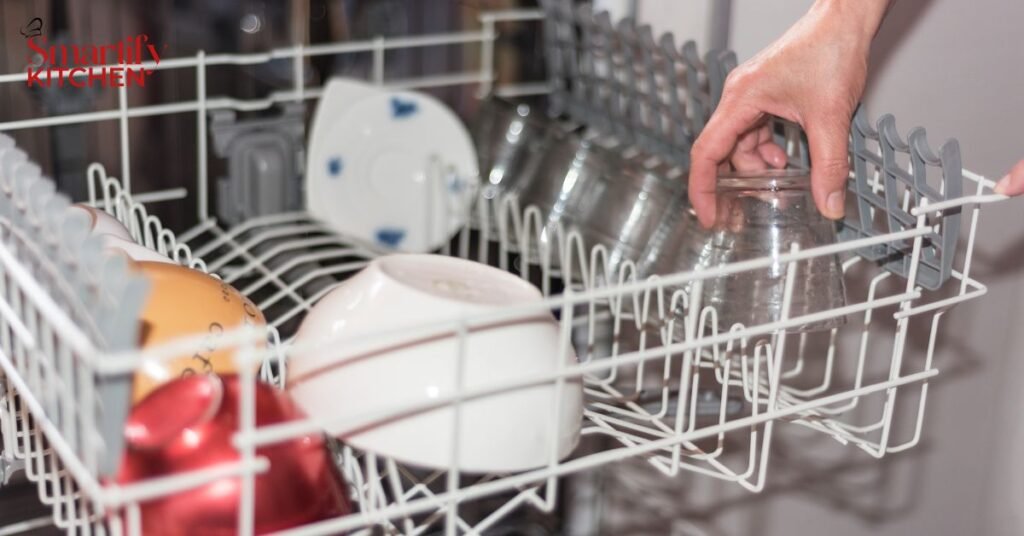
Positioning the Dishwasher
With the space prepared, you can now position your new smart dishwasher:
- Align the Dishwasher:
- Carefully slide the dishwasher into the installation space. Ensure that it is aligned properly with the opening.
- Level the Dishwasher:
- Use a level to check that the dishwasher is perfectly horizontal. Adjust the feet as necessary to ensure it is level.
Connecting Water Supply and Drainage
Proper connections are essential for the dishwasher to function correctly:
- Attach Water Supply Line:
- Connect the water supply line to the dishwasher’s inlet valve. Use a wrench to ensure the connection is secure.
- Connect Drain Hose:
- Attach the drain hose to the dishwasher and secure it with hose clamps. Ensure that the hose is properly positioned to prevent clogs.
Connecting Electrical Wires
Make sure the electrical connections are made correctly:
- Follow Manufacturer’s Instructions:
- Refer to the dishwasher’s installation manual for specific wiring instructions. Connect the wires according to the color codes and secure them with wire nuts.
- Secure and Insulate Connections:
- Ensure that all electrical connections are well-insulated and securely connected to prevent any electrical hazards.
5. Securing and Testing the Installation
After Installing the Smart Dishwasher, Let’s Explore Securing and Testing the Installation.
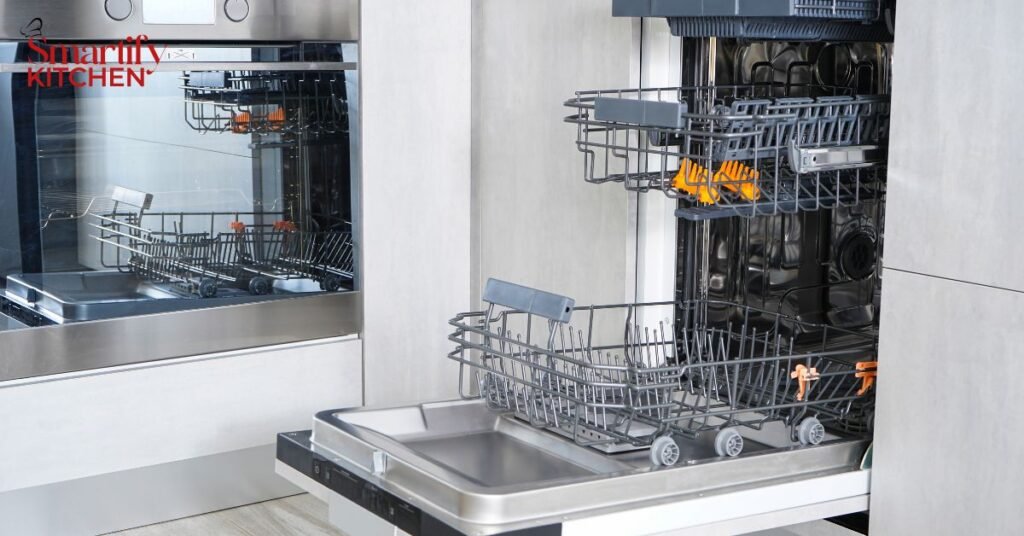
Securing the Dishwasher
Once the dishwasher is positioned and connected, secure it in place:
- Reattach to Cabinetry or Countertop:
- Use screws or brackets to secure the dishwasher to the surrounding cabinetry or countertop.
- Ensure Stability:
- Check that the dishwasher is stable and firmly in place. Adjust as necessary to ensure there is no movement.
Testing the Installation
Test the dishwasher to ensure it operates correctly:
- Turn On Water Supply:
- Gradually turn on the water supply and check for any leaks around the connections.
- Test Electrical Connections:
- Restore power to the dishwasher and test the electrical connections by turning on the appliance.
- Run a Test Cycle:
- Run a test cycle to ensure that the dishwasher functions properly. Check for any error codes or issues with operation.
- Verify Smart Features:
- Ensure that the smart features are functioning as expected. Test connectivity with your home Wi-Fi and verify that you can control the dishwasher via the app.
6. Configuring the Smart Features
Now Let’s Explore some tips on Configuring the Smart Features.
Connecting to Wi-Fi
To make the most of your smart dishwasher, connect it to your home Wi-Fi network:
- Follow Manufacturer’s Instructions:
- Use the manufacturer’s app to connect the dishwasher to your Wi-Fi network. Follow the step-by-step instructions provided.
- Complete Setup:
- Once connected, complete the setup process in the app. This may include configuring settings, creating user profiles, and linking with other smart home devices.
Configuring Settings and Preferences
Customize the dishwasher’s settings to suit your preferences:
- Set User Profiles:
- Create profiles for different family members if the dishwasher supports this feature. Adjust settings based on individual preferences.
- Explore Smart Features:
- Familiarize yourself with the smart features available, such as remote control, notifications, and automated cycles. Configure these features to enhance your user experience.
Testing Smart Features
Ensure that all smart features are working correctly:
- Run a Test Cycle Using Smart Controls:
- Use the app or voice commands to start a test cycle. Verify that the dishwasher responds to remote commands and operates as expected.
- Verify Remote Monitoring and Notifications:
- Check that you receive notifications about the dishwasher’s status and any issues. Ensure that remote monitoring features are functioning correctly.
7. Troubleshooting and Maintenance
You May Face some issues in Troubleshooting and Maintenance, too, so now let’s explore some tips about it too.
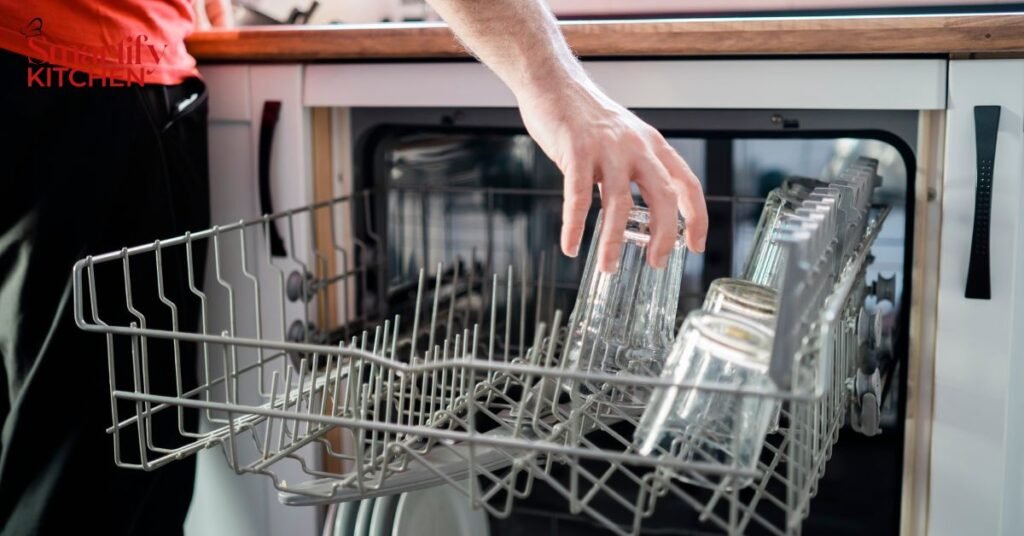
Common Installation Issues
Address any common issues that may arise during installation:
- Leaks:
- If you notice leaks, check all connections and tighten them as needed. Ensure that the drain hose is properly secured.
- Connectivity Problems:
- If the dishwasher is not connecting to Wi-Fi, verify that your network is functioning properly. Check the manufacturer’s troubleshooting guide for specific solutions.
Routine Maintenance Tips
Regular maintenance is essential to keep your smart dishwasher in top condition:
- Cleaning:
- Regularly clean the dishwasher’s interior, filter, and spray arms. Follow the manufacturer’s recommendations for cleaning products.
- Maintaining Performance:
- Schedule regular maintenance checks and software updates to ensure optimal performance. Address any issues promptly to prevent damage.
- Checking for Software Updates:
- Keep the dishwasher’s software up to date by checking for updates in the app or on the manufacturer’s website.
Conclusion
Installing a smart dishwasher can significantly enhance your kitchen’s efficiency and convenience. By following this comprehensive guide, you can ensure a smooth installation process and fully enjoy the benefits of your new appliance.
From preparing the installation site and connecting water and electrical supplies to configuring smart features and performing routine maintenance, each step is crucial for achieving optimal performance.
If you encounter any challenges or prefer professional assistance, don’t hesitate to seek help from a qualified technician. With proper installation and care, your smart dishwasher will provide years of reliable service and smart functionality.
Additional Resources
For further assistance and information, consider exploring these resources:
- Manufacturer’s Installation Manuals: Available on the manufacturer’s website for detailed instructions specific to your model.
- Professional Installation Services: Contact local appliance installers for expert help.
- Smart Dishwasher Reviews and Recommendations: Websites such as Consumer Reports, CNET, and Wirecutter offer reviews and comparisons of smart dishwashers to help you make an informed choice.



